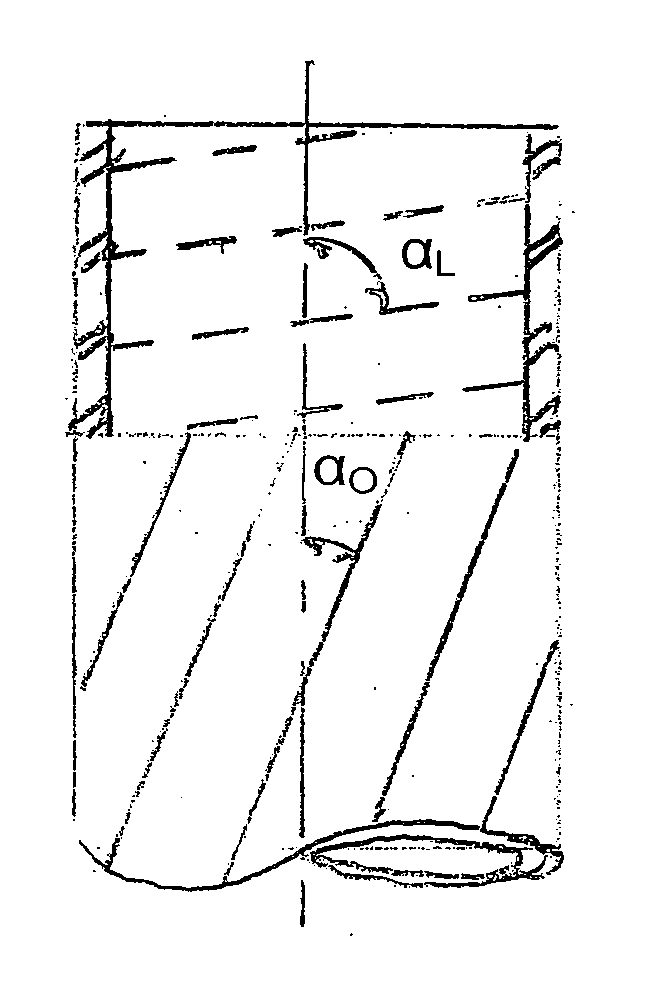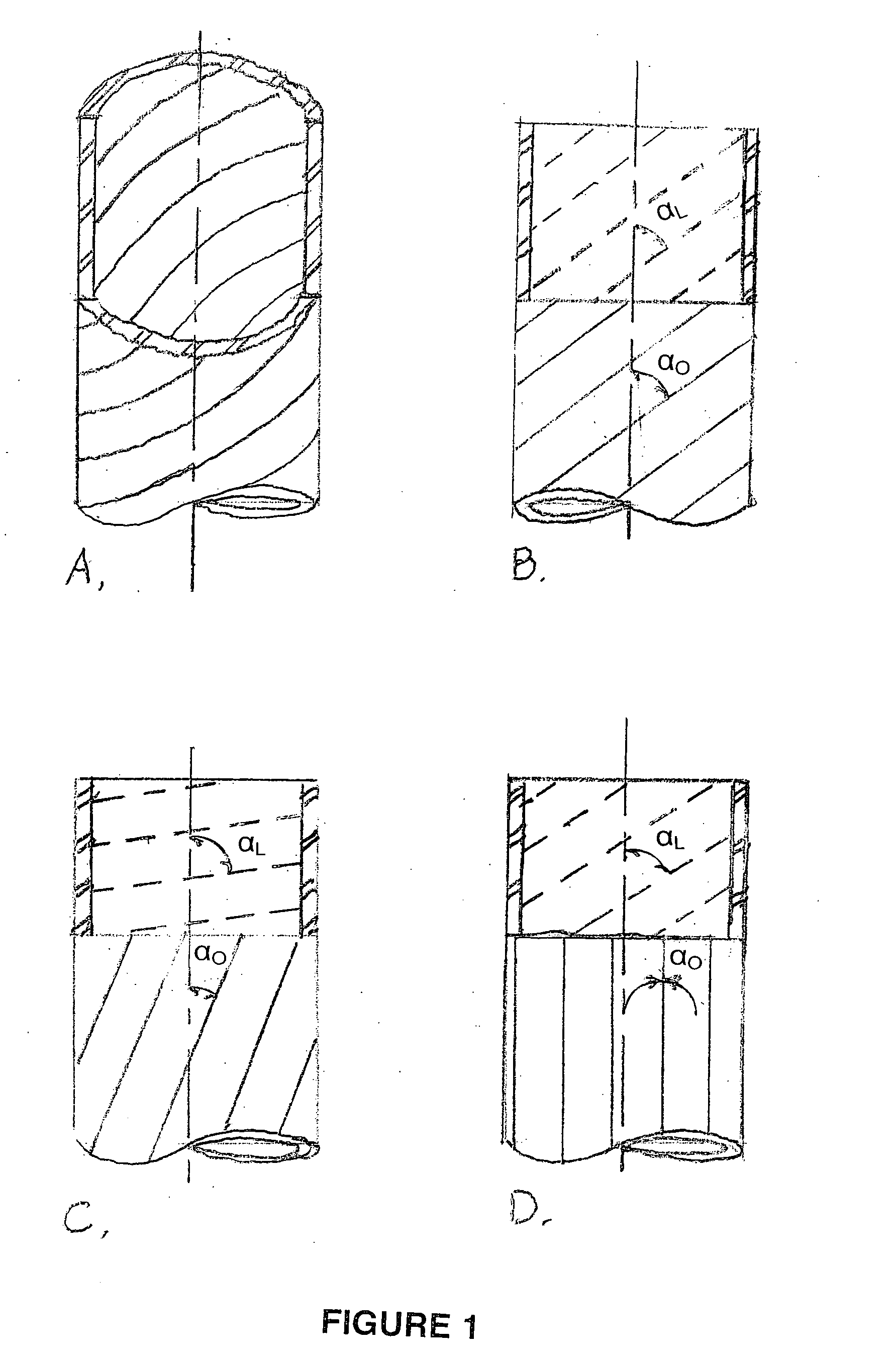Tissue scaffold having aligned fibrils, apparatus and method for producing the same, and artificial tissue and methods of use thereof
a tissue and fibril technology, applied in the field of tubular tissue scaffolds, can solve the problems of adverse tissue reactions, inflexible degradable polyesters, and the most difficult challenges, and achieve the effects of minimal immunological response, improved structural integrity, and sufficient structural strength
- Summary
- Abstract
- Description
- Claims
- Application Information
AI Technical Summary
Benefits of technology
Problems solved by technology
Method used
Image
Examples
example 1
[0131] This example illustrates the preparation of a biopolymer gel comprising type I collagen from a bovine steer hide.
[0132] Collagen was prepared from the hide of an 18-month old bovine steer by removal of the superficial epidermis including the hair and follicle pits. To isolate the collagen the hide was cut into 4×6 cm strips and washed with three changes of deionized (DI) water for 1 hr. each (the second wash contained 0.2% NaHCO3). The remaining follicles and noncollagenous proteins were removed by bathing in a solution of 0.6% NaHCO3, 2% Ca(OH)2, and 4.3% NaHS for 30 min at 20° C. After three washings in DI water, the strips were treated overnight in 2% Ca(OH)2 at 4° C. The remaining fat and epidermis were trimmed from the strips the following day. The strips were then placed in a 2M NaCl solution and neutralized with HCl to a pH of 6.8-7.0. The strips were then washed three times in DI water, cut into 0.5×2 cm pieces, and placed in a solution of 0.5 N acetic acid with or w...
example 2
[0133] This example illustrates the production of a collagen tubular tissue scaffold having aligned fibrils by using a counter-rotating cone extruder.
[0134] Collagen tubes were produced by loading a collagen gel dispersion, produced as described in Example 1, into a 60 ml syringe that was placed into a syringe pump (having an adjustable feed rate of 0-20 cc / min) that fed the collagen into the feed port of a counter-rotating cone extruder that was fabricated from Delrin (Tri Star plastics, Reading, Pa.) according to the illustration shown in FIG. 1. The drive motor was a 90 volt 0.06 hp DC motor (Baldor Electric, Ft. Smith Ark.) with a regenerative feedback drive and a 5 kΩ potentiometer for user interface (KB electronics, Coral Springs Fla.). The motor is coupled to the pinion gear which drives the outer rotating member and the inner rotating cone drive gears. The direct drive system can control speeds from 0 to 1800 rpm with a 2:1 reduction from the pinion gear to the drive gears....
example 3
[0144] This example illustrates seeding of cardiac myocyte on a collagen tubular tissue scaffold.
[0145] Collagen tubes were produced as described in Example 2. Prior to the addition of myocytes, the collagen tubes were sectioned into 1.25 cm lengths. The small collagen tube sections were placed in sterile Mosconas solution (0.14M NaCl, 0.0027M KCl, 0.012M NaHCO3, 4.2×10−5 M NaH2PO4, 0.0094M glucose) and exposed to ultraviolet (UV) light for 4 hours to sterilize. Following UV treatment, fresh Marconas solution with 0.01 mg / ml gentamycin, 4 μg / ml Amphotericin-B, and 10 μg / ml fibronectin was added to a culture dish containing the collagen tube sections and incubated for 24 hours with 5% CO2 at 37° Celsius.
[0146] Isolation of neonatal cardiac myocytes was performed as described by Simpson et al., J Cell Physiol, 161:89-105 (1994). For seeding, collagen tube sections were placed in 150 mm culture dishes and 0.5 ml of a cellular suspension containing 2×106 cells / ml was injected into the...
PUM
| Property | Measurement | Unit |
|---|---|---|
| diameter | aaaaa | aaaaa |
| diameter | aaaaa | aaaaa |
| diameter | aaaaa | aaaaa |
Abstract
Description
Claims
Application Information
 Login to View More
Login to View More - R&D
- Intellectual Property
- Life Sciences
- Materials
- Tech Scout
- Unparalleled Data Quality
- Higher Quality Content
- 60% Fewer Hallucinations
Browse by: Latest US Patents, China's latest patents, Technical Efficacy Thesaurus, Application Domain, Technology Topic, Popular Technical Reports.
© 2025 PatSnap. All rights reserved.Legal|Privacy policy|Modern Slavery Act Transparency Statement|Sitemap|About US| Contact US: help@patsnap.com



